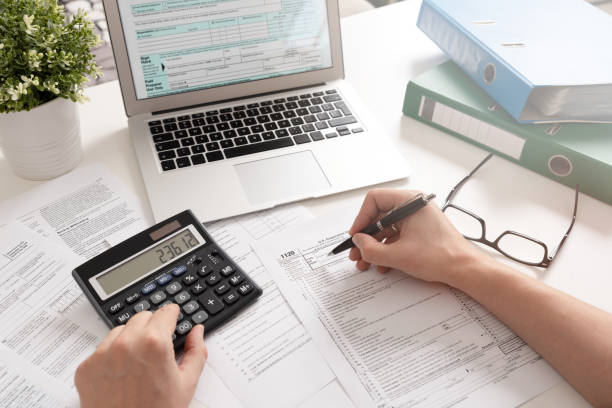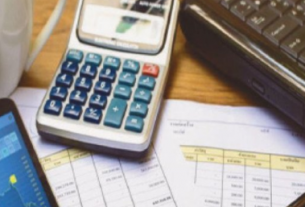Managing your personal and business finances can be tough, especially if you’re just starting out. I’m going to share How to manage personal and business finance.
If this is the case for you, here are some tips on how to manage your money so that you can avoid spending too much or not having enough.
Table of Contents
Opt to record all transactions.
- Record all transactions.
- Keep receipts for a few months so that you can remember where you spent money and why. Especially, if it wasn’t on something you normally buy or had to pay for out of pocket. You might be surprised by how much you spend in one month. On things like coffee or lunch, which might not seem like big expenses but add up over time!
- Use a finance application to record transactions as they happen (you can even use the same app for both personal and business accounts). Then transfer them into an Excel spreadsheet once or twice per month. So that they’re easy to track over time. Make sure that whichever software/application. You choose is easy enough for everyone involved in managing finances; otherwise people will lose motivation quickly!
The best finance applications include a wide range of features. The more you use your phone, the more you’ll want a finance application.
That can help you with everything from bill pay to tracking spending. Some popular features include being organized. Good way How to manage personal and business finance.
Keep a running list of expenses and income so that you can easily identify where money is going.
and create folders for each person involved in the business for easy access to documents. If you’re using a spreadsheet.
Make sure that all columns have both an account name and number so that when it comes time to transfer them into QuickBooks (more on this below), there’s no confusion about what goes where.:
Choose a finance application that is easy to use.
When choosing a finance application, it’s important to choose one that is easy to use. The application should have a good interface.
Be user-friendly and compatible with your phone and tablet. It should also be easy to sync with your bank account.
The best finance applications are also secure. They can help you protect your information by offering two-factor authentication.
Which requires a password and one other piece of information to log in.
The same thing goes for expenses incurred from different accounts. If you use different checking and savings accounts.
Create tags for each account. Then when it’s time to pay your bills at the end of each month, all that needs to happen is entering in the total amount spent.
Under each respective tag. No need for separating out individual charges from separate accounts!
Create categories and tags for your expenses.
Tags are used to group similar items and expenses. You can use tags for the same item in different categories, or you can create a tag for each category of expense.
For example, if you have a vacation planned and want to keep track of how much money is going toward airfare and hotel reservations.
Create two tags: “Airfare” and “Hotel.” Then when it’s time to pay your bills at the end of each month, all that needs to happen is entering.
In the total amount spent under each respective tag. No need for separating out individual charges from separate accounts!
It’s also a good idea to have separate accounts for business and personal transactions. This can help you keep your finances organized.
And prevent confusion about where money is going. It’s especially important if you have more than one business; it will be easier to see all of your transactions in one place and make sure that they’re reconciled properly.
Use one account for business and personal transactions.
It’s important to use one account for business and personal transactions, as this will help you keep your finances organized.
You’ll be able to see all of your transactions in one place and make sure that they’re reconciled properly. Another good way How to manage personal and business finance.
This also makes it easier to avoid overdraft fees on either side of the ledger, since you’ll know when there are cash flow issues coming up or if there’s enough money available before making purchases or paying bills.
Identify recurring expenses and set up automatic payments.
You should consider setting up automatic payments for all of your recurring expenses. This will ensure.
That you don’t forget to pay your bills and can save yourself a lot of hassle in the long run.
If you want to make sure that you never miss a payment, set up automatic payments for each of them. Here are some examples:
- Bills – set up automatic withdrawals from checking or savings accounts, or even directly from paycheck (if possible)
- Credit cards – if it’s possible with your bank or credit union, sign up for auto-pay so that interest doesn’t accrue during the billing cycle and get charged late fees if there’s no activity on the account during that time frame
Managing personal and business finance is easier with a good system in place.
A good system is a key to managing your personal and business finances. A good system will allow you to keep track of all your money, both what comes in and what goes out.
It will help you see where the holes are in your budget, so that they can be filled before they become a problem. You need to keel improving on How to manage personal and business finance.
A good system should be easy to use, but also flexible enough that it doesn’t get in the way of getting things done quickly.
You don’t want something so complicated that it takes more time than just doing things manually!
Once you’ve established a solid foundation for how things are organized, make sure there’s always someone.
Who knows how everything works (and can troubleshoot any problems) by putting together an emergency contact list with names, phone numbers.
And email addresses for any necessary parties such as financial advisors or accountants who may need access if needed during off hours when no one else is around at home
Conclusion
Now that you have read this article, you are ready to take the next step in managing your personal and business finances.
We hope that our tips will help you create a system that works for you and your company.
Remember that there is no one-size-fits-all approach to financial management; it is important to find what works best for each person or business!

Oliver is a professional blogger and a seasoned business and finance writer. With a passion for simplifying complex financial topics, he provides valuable insights to a diverse online audience. With four years of experience, Oliver has polished his skills as a finance blogger.



